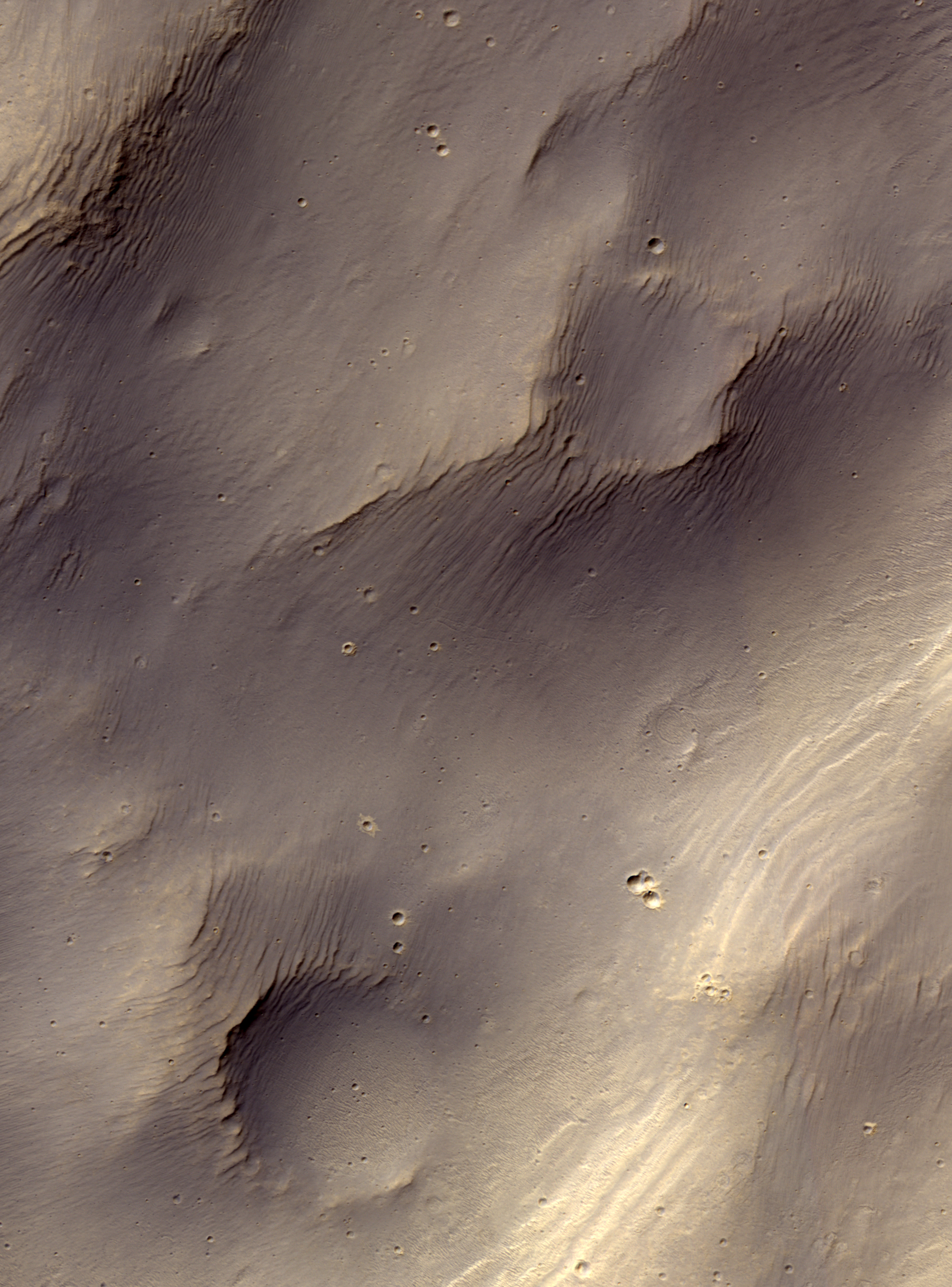Is it windblown or not (#2)?

Overhang
November 15, 2017
The corpse of a dune
November 27, 2017
A Piece of Mars: This 0.93×1.25 km (0.57×0.78 mi) scene shows what I’m starting to think are windblown features. I posted something similar to this once before, from a location not that far from here. In this one region of Mars there are parallel lines cut into the tops of hills. A geologist would first presume they were exposed, tilted layers. But the regularity of their spacing (especially when you zoom in) is a bit unusual, and suggests some sort of self-organization (like windblown ripples). And then the questions begin: why just in this spot on Mars? what’s unusual about the rocks (or the wind) here? I still have no good answers. (HiRISE ESP_052386_1565 NASA/JPL/Univ. of Arizona)




6 Comments
It may not be an either “windblown or not” answer.
It could actually be both
I think what appear to be ripples are actually exposed layers of solid rock because you can see where they are only partially covered and areas where they disappear completely (under windblown surface sand?) And you can also see an area in the upper left corner where it looks like a rock cliff that has been broken up.
But it is quite possible that the layers were ORIGINALLY laid down by wind, which then hardened into rock.
You can see the layers of such exposed petrified sand dunes all over the place in southern Utah, particularly in the stratigraphic layer called the Navaho sandstone.
https://www.nps.gov/zion/learn/nature/sand-dunes-sandstone.htm
http://www.katypytte.com/wp-content/uploads/2012/09/774373611.jpg
Could be. There are exposed cross-strata in other places on Mars, but they look nothing like this. There’s a slight difference in color between the overlying mantle (bluish gray) and the underlying rock (tan), and both appear to have these layers/ripples. Another problem is that aeolian cross-strata don’t usually have such straight layers – they tend to be curved and intersect with one another, as dunes are 3-D features that constantly deposit and erode materials.
I’m always intrigued with the number of meteor craters here, and on the moon. How has Mars sustained so many ground hits without them being eroded away? Assuming that the round feature near the bottom of the picture is an extremely ancient impact crater that actually does exhibit erosion features, it suggests to me that perhaps the wind action on the surface is actually very slow, compared to our dunes here.
…An aside; why are all impact craters round? When you throw a rock at sand it impacts at an angle and the resulting mark tends to be a sort of tear drop. The only way of getting a round impact crater is to throw vertically. …Or is it to do with scale – the acute angle of entry required for a lower angle strike probably resulting in the meteor burning up before hitting the ground?
Yeah, those are impact craters. And yes, erosion is much slower on Mars, mostly because it doesn’t have water-related erosion (rivers, shorelines, etc.) that do most of the work on Earth to erode topography. Most craters are round, unless they come from a very shallow angle (see here: https://www.scientificamerican.com/article/why-are-impact-craters-al/). If you throw a rock hard enough then it will leave a round hole at most of the angles you throw it from.
Interesting stretch marks, or should I say the opposite stretch marks!
It seems like movement in the subsurface substance gives “wrinkles” on the surface. Looks like whale skin when studying it up close.
The circular structures appear to be fixed to subsurface “anchors”, while the “softer” surroundings appear to move by expanding…and thereby creating what looks like wind drifts.
Is there a chance there is a subsurface “soft” substance like ice or other semi-liquid matter creating this “familiar” pattern?
It’s unlikely there’s ice here, as it’s near the equator. The circular structures are probably highly eroded craters. Otherwise I’m not entirely sure how this surface texture is made.